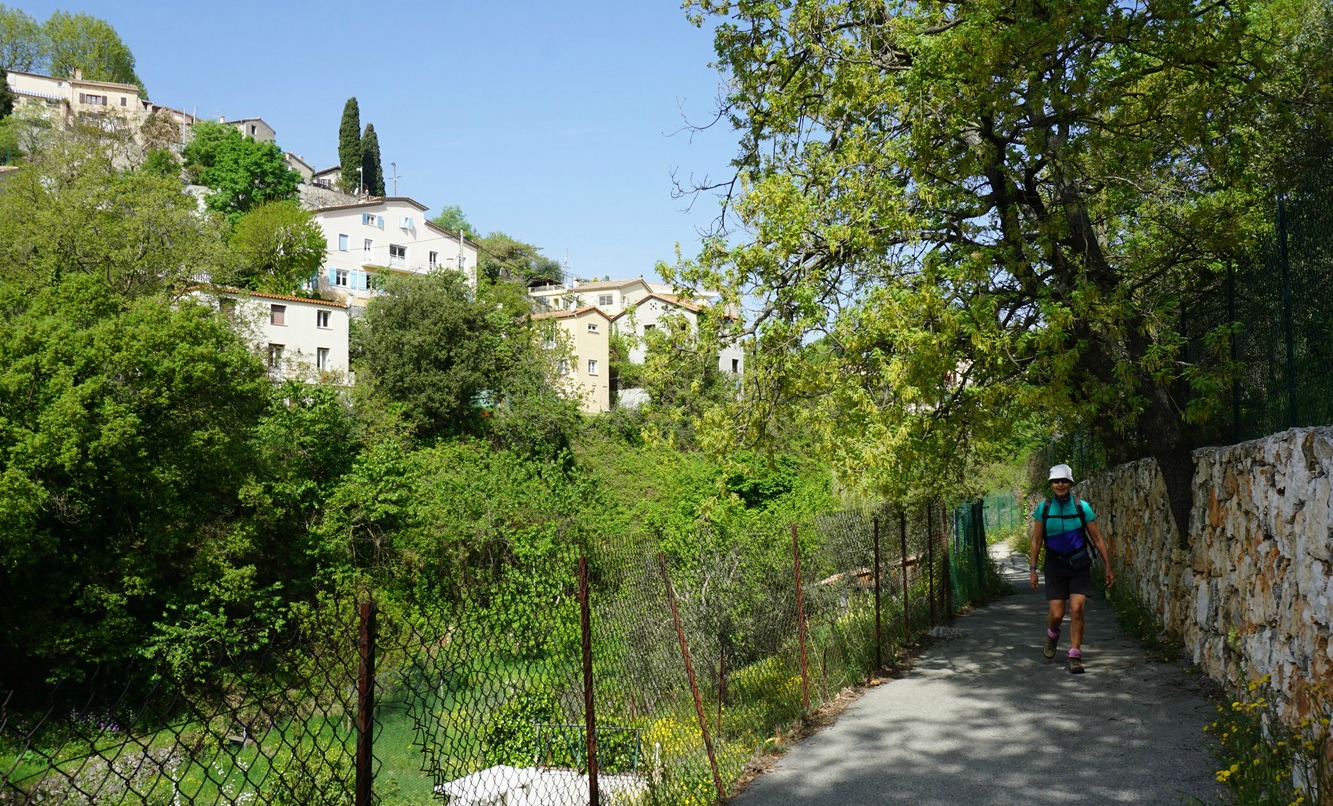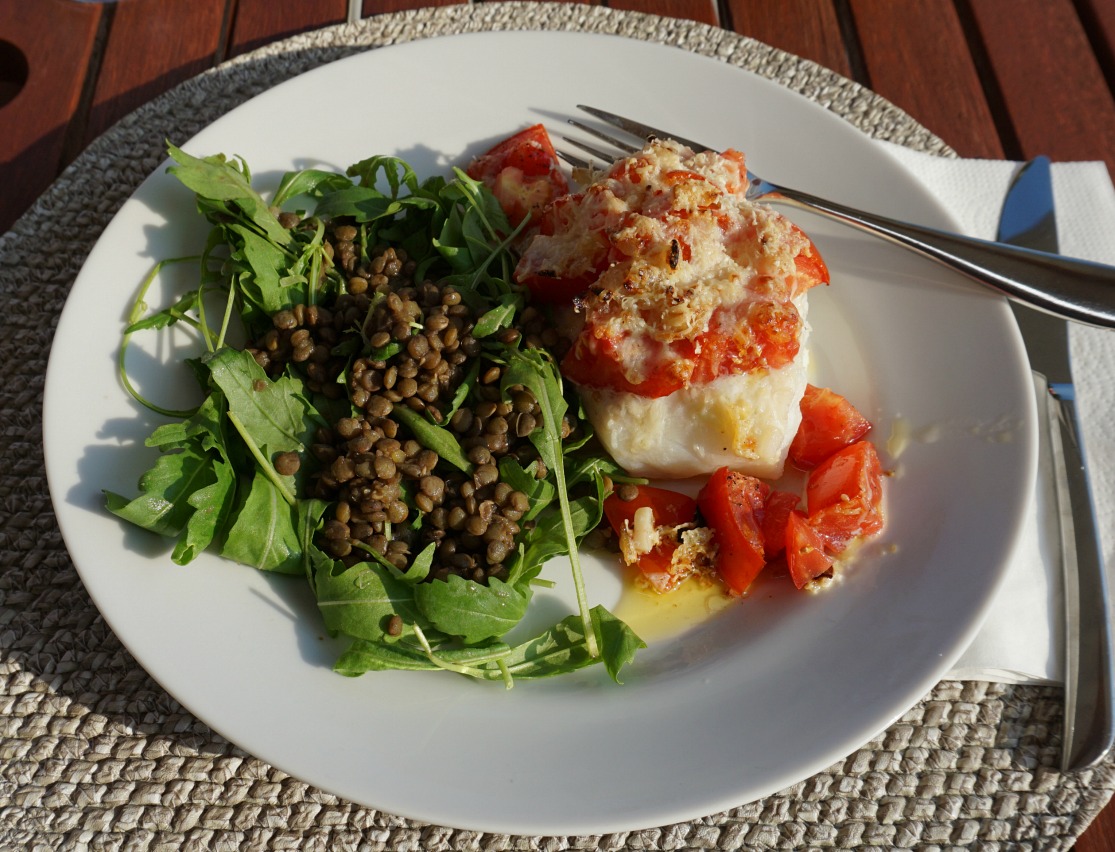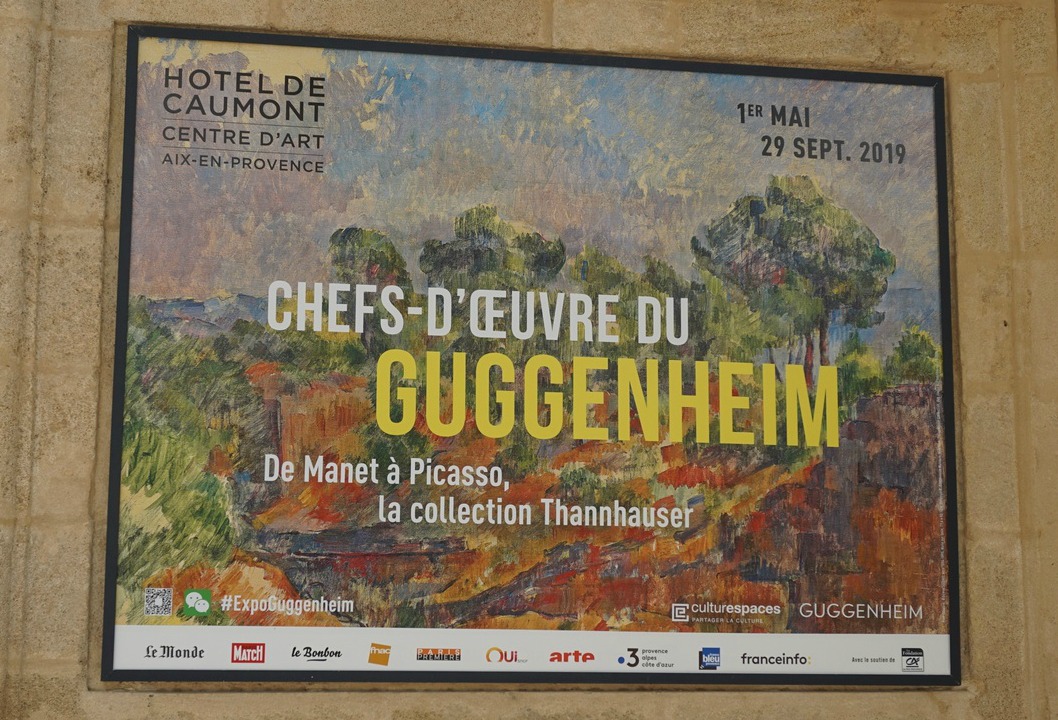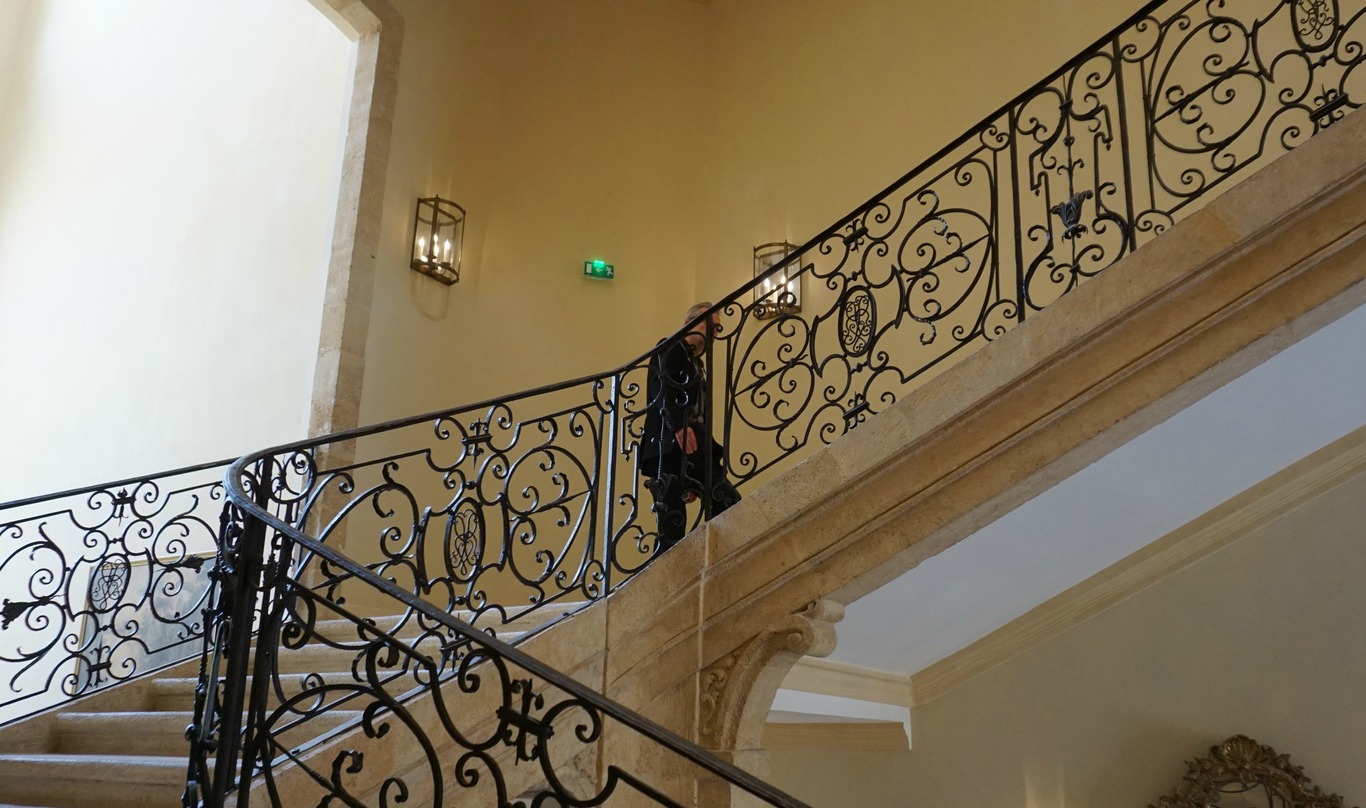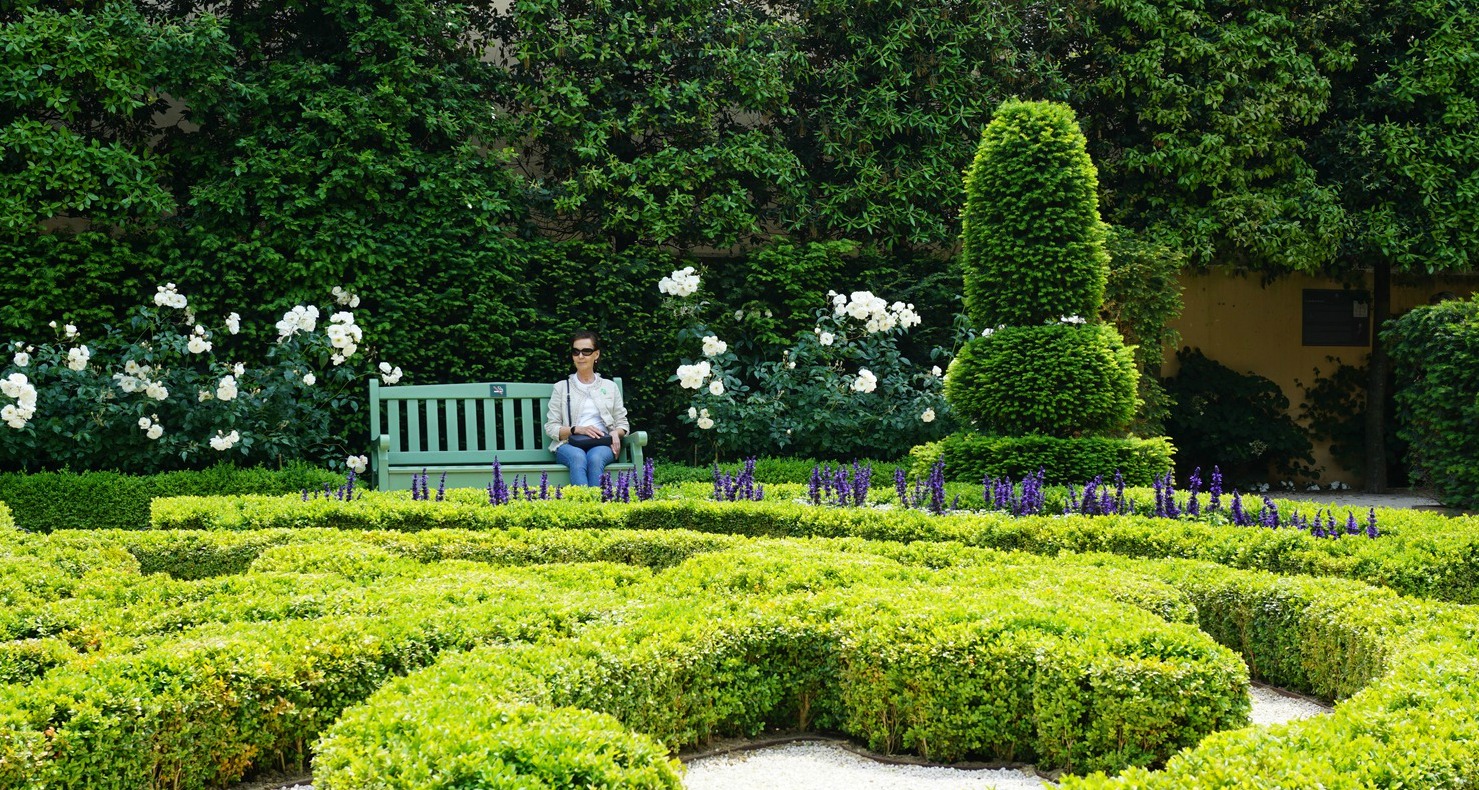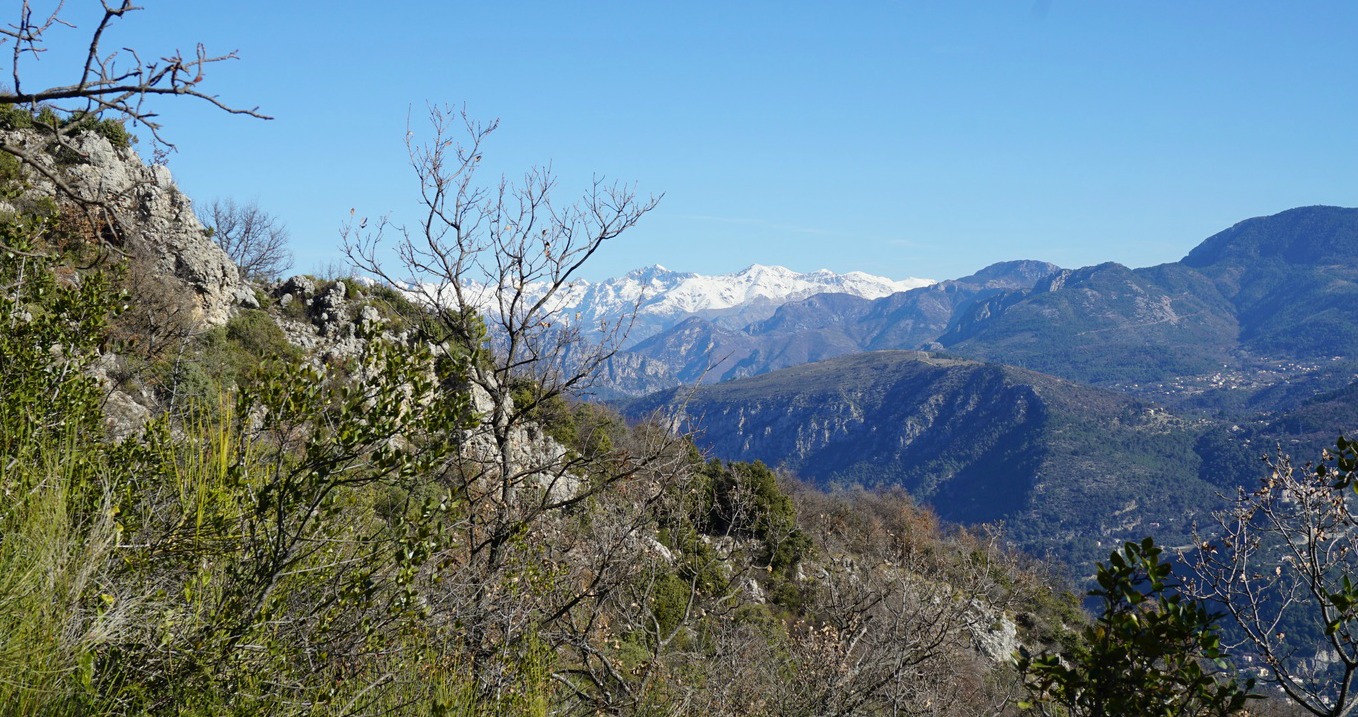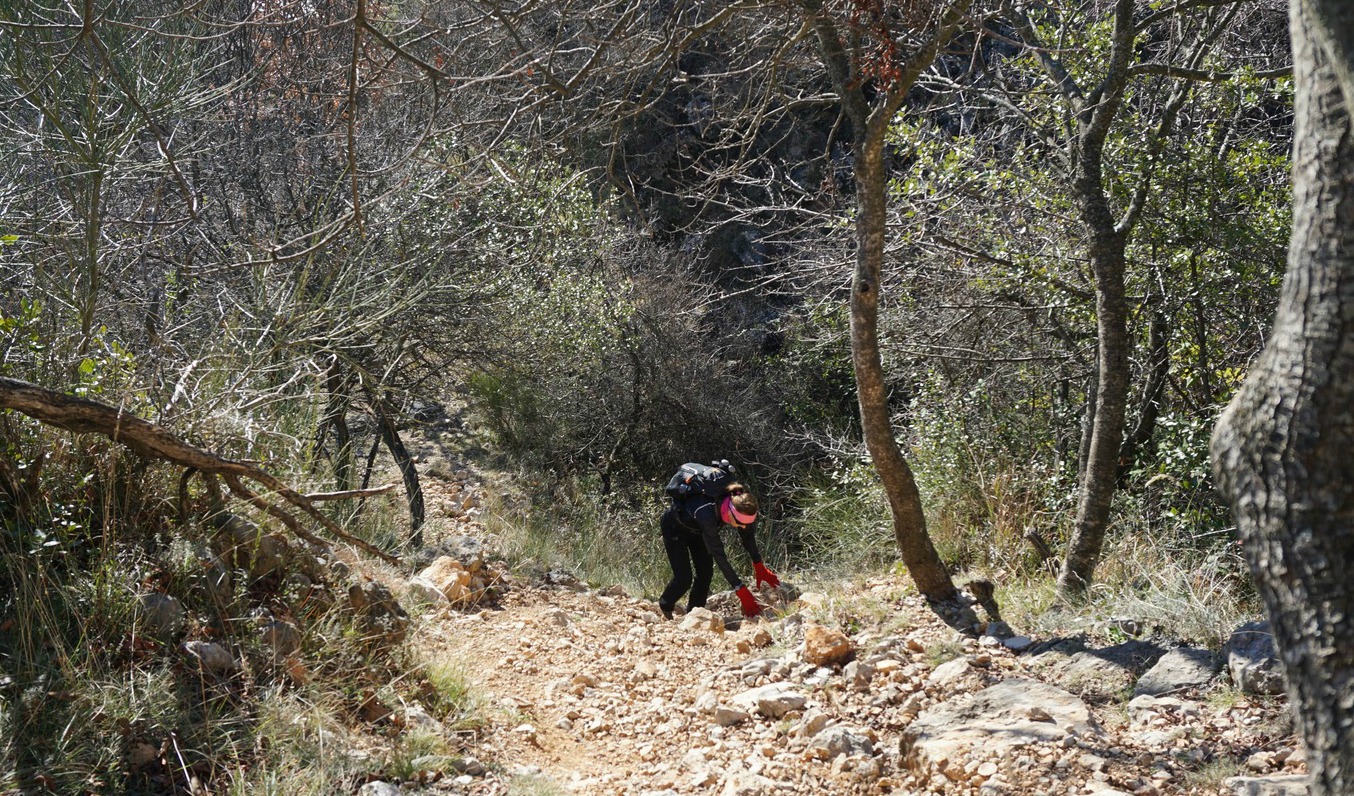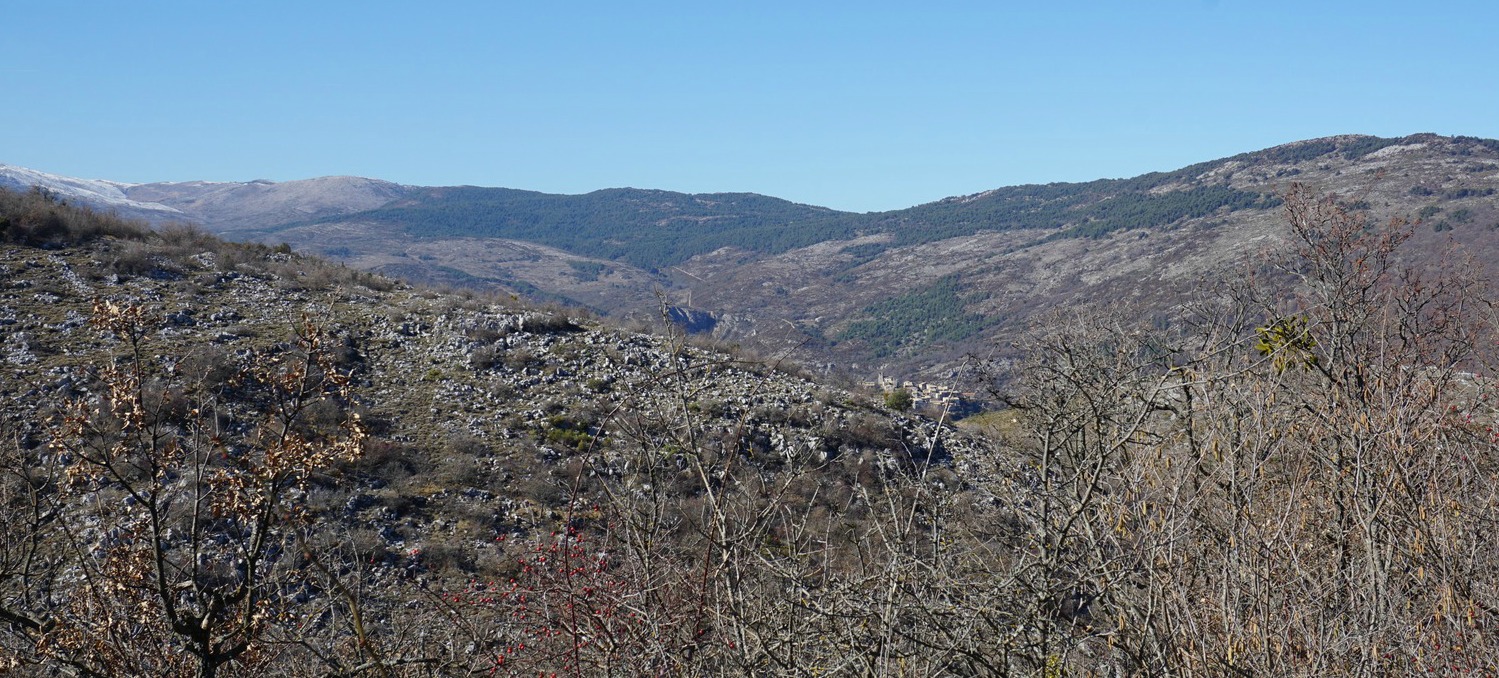Saint-Sauveur sur Tinée to Rimplas

This trail is part of the first day trek of a 4-day itinerary named Via Alpina 2, which starts from St-Sauveur-sur-Tinée (500 m) and ends in Sospel. Several years ago, we made a shortened version starting from St-Martin Vesubie.
We have since made great day hikes from both St-Sauveur-sur-Tinée and Rimplas (1000 m) so this time we wanted to explore the GR 5 between these villages.
The trail was well marked but not much frequented. We even saw a snake in the middle of the trail. After google search, it turned out to be a rather harmless western whip snake. In fact, we rarely have spotted snakes during our hikes in the South of France.
From the spacious parking next to the Tinée River in St-Sauveur-sur-Tinée, we followed the GR markings heading south along the main street/M2205 road. After about 300 m we forked left at signpost # 167 and followed a paved road to Chapel St-Roch.
The hiking trail ran partly in the woods, following the paved road. Behind the chapel, the GR5 continued a bit along a cemented track, then along a good path. The ascent was continuous but never steep, i.e. an easy itinerary. Gradually higher, we had great views of the verdant Tinée River Valley and the still snow-capped peaks in the north.
Approaching Rimplas, the trail became wider, following a steep mountain flank. There were some small rockslides on the trail just before Rimplas. Keeping a very moderate pace, we reached Rimplas in 1h 50.
After a brief break and picnic, we descended along the same trail. Even our snake was still on the trail!
Climb: 530 m

Duration: 3h 20 (active)
Distance: 11,9 km
Distance: 11,9 km




















